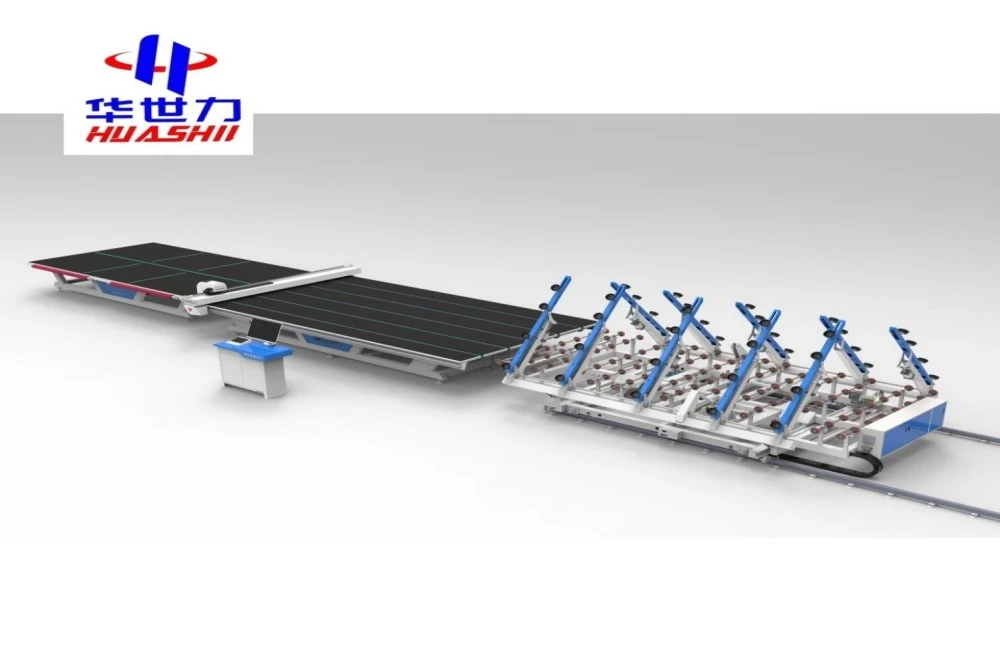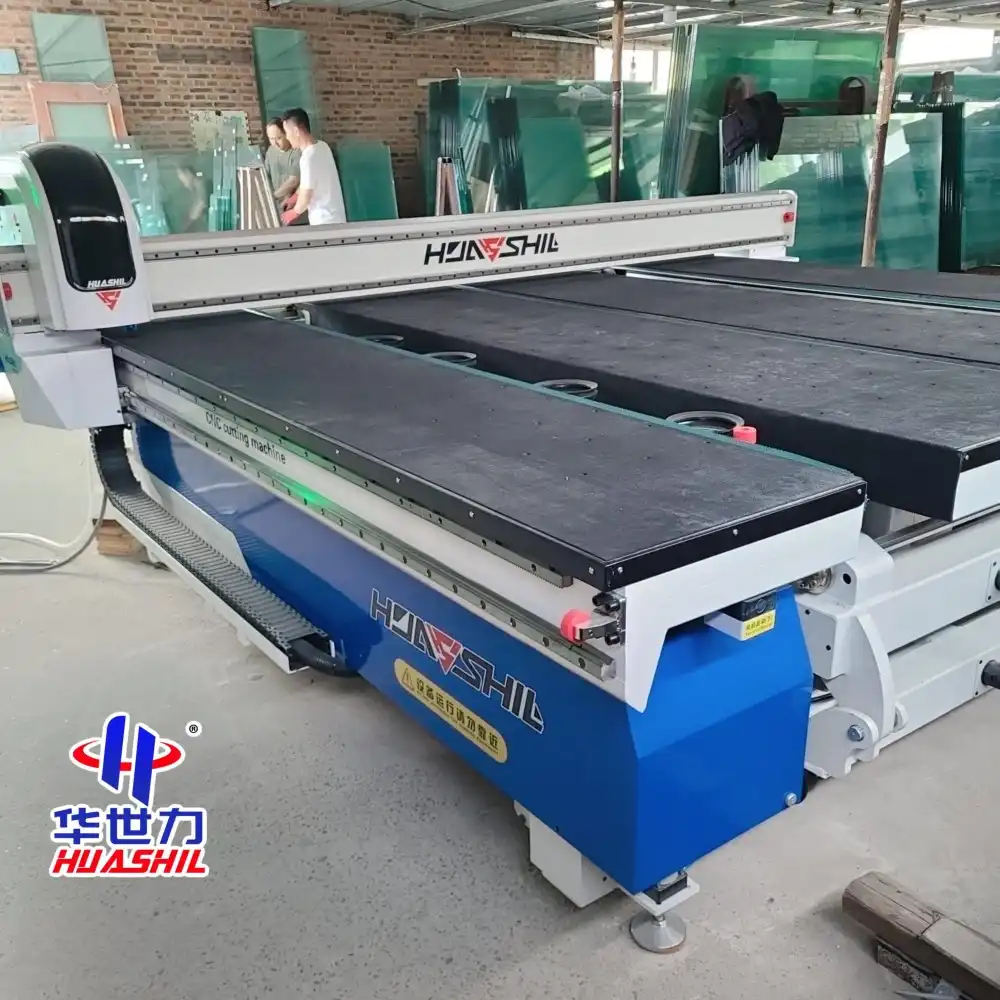In the realm of glass fabrication, two cutting-edge technologies stand out: waterjet cutting and Automatic Glass Cutting Machine. Both methods have revolutionized the industry, offering unique advantages and applications. This comprehensive comparison will delve into the intricacies of these technologies, exploring their speed, edge quality, and material thickness limitations.
Cutting Speed Comparison: Waterjet vs Mechanical
When it comes to cutting speed, both waterjet and automatic glass cutting machine technologies have their strengths. Waterjet cutting utilizes a high-pressure stream of water mixed with abrasive particles to slice through glass. This method can be relatively slow, especially for thicker materials, as the water stream needs time to erode the glass.
On the other hand, mechanical cutting, employed by automatic glass cutting machines, uses diamond-tipped wheels or scoring tools to create a precise line of weakness in the glass, which is then snapped along this line. This process is generally faster than waterjet cutting, especially for straight cuts and simple shapes.
For instance, a state-of-the-art automatic glass cutting machine can process up to 30 meters per minute for straight cuts on standard float glass. Waterjet cutting speeds, while variable depending on thickness and intricacy, typically range from 1 to 5 meters per minute for similar materials. However, it's crucial to note that speed isn't everything. The complexity of the cut, the thickness of the glass, and the desired edge quality all play roles in determining which method is more efficient for a specific project.

Edge Quality Differences Between Cutting Methods
Edge quality is a critical factor in glass cutting, affecting both the aesthetic appeal and structural integrity of the final product. Waterjet and mechanical cutting methods produce distinctly different edge qualities.
Waterjet cutting excels in producing smooth, polished edges directly from the cutting process. The high-pressure water stream creates a clean cut with minimal chipping or microcracks. This method is particularly advantageous for thick glass or when cutting intricate shapes where a smooth edge is crucial.
Conversely, mechanical cutting with an automatic glass cutting machine typically produces a scored edge that requires further processing to achieve a smooth finish. The initial cut creates a controlled break in the glass, which can result in small chips or a slightly rough edge.
However, modern automatic glass cutting machines have made significant strides in edge quality. Advanced scoring wheels and breaking systems can produce remarkably clean edges, often requiring minimal additional processing. Some machines even incorporate integrated edge polishing systems, streamlining the entire process.
The choice between waterjet and mechanical cutting often depends on the specific requirements of the project. For applications requiring exceptionally smooth edges without additional processing, waterjet cutting might be preferable. For high-volume production where speed is crucial and slight edge imperfections are acceptable or can be quickly addressed, mechanical cutting with an automatic machine is often the go-to choice.
Material Thickness Limitations for Each Technology
The thickness of the glass being cut is a crucial factor in determining which technology is more suitable. Both waterjet and mechanical cutting have their limitations and sweet spots when it comes to material thickness.
Waterjet cutting shines when it comes to thick glass. It can effortlessly cut through glass up to 200mm thick, making it ideal for heavy-duty architectural applications or specialized industrial uses. The water stream maintains its cutting power throughout the thickness of the material, ensuring consistent quality from top to bottom.
On the other hand, automatic glass cutting machines using mechanical methods typically have more limitations on thickness. Most standard machines are designed to handle glass thicknesses ranging from 2mm to 25mm efficiently. However, specialized machines can push this limit higher, with some capable of scoring glass up to 40mm thick.
It's important to note that while mechanical cutting can score thicker glass, the breaking process becomes more challenging and less predictable as thickness increases. This is where waterjet cutting maintains an advantage for very thick materials.
For thin glass, typically below 2mm, mechanical cutting often proves more efficient and precise. The delicate nature of thin glass makes it susceptible to damage from the high-pressure water stream, whereas a well-calibrated automatic glass cutting machine can handle it with finesse.

The choice between waterjet and mechanical cutting for different thicknesses also depends on the volume of production. For high-volume production of standard thickness glass (3-12mm), automatic mechanical cutting machines often provide the best balance of speed, precision, and cost-effectiveness.
Conclusion
Both waterjet and automatic glass cutting technologies have their place in modern glass fabrication. Waterjet cutting offers unparalleled versatility in terms of material thickness and complexity of cuts, while automatic mechanical cutting excels in speed and efficiency for standard glass products.
The decision between these technologies ultimately depends on factors such as the specific requirements of your projects, production volume, and the range of glass thicknesses you work with. For many applications, a combination of both technologies might provide the most comprehensive solution.
At Shandong Huashil Automation Technology Co., LTD, we understand the nuances of glass cutting technologies. Our expertise in automated R&D, manufacturing, and sales of mechanical equipment positions us uniquely to offer cutting-edge solutions tailored to your specific needs. With years of production and export experience, we pride ourselves on advanced techniques, stable quality, and excellent service that have earned us a loyal customer base worldwide.
Ready to elevate your glass cutting capabilities? Reach out to our team of experts at salescathy@sdhuashil.com. Let's discuss how our state-of-the-art automatic glass cutting machines can revolutionize your production process, boost efficiency, and deliver the precision your projects demand.
References
1. Johnson, A. (2022). "Advancements in Glass Cutting Technologies: A Comparative Study"
2. Zhang, L. et al. (2021). "Precision and Efficiency in Modern Glass Fabrication Methods"
3. Brown, R. (2023). "Industrial Applications of Waterjet and Mechanical Glass Cutting"
4. Garcia, M. (2022). "The Future of Automation in Glass Manufacturing Processes"



